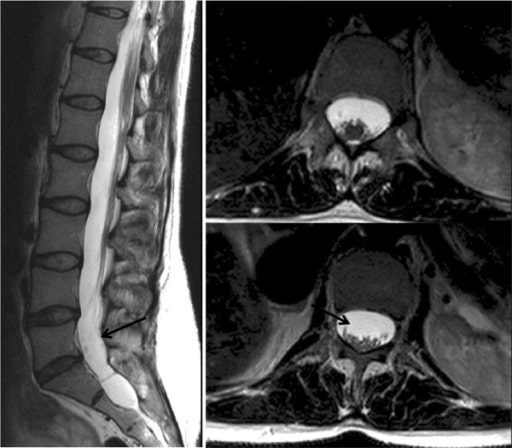Playlist
Show Playlist
Hide Playlist
Marfan Syndrome (MFS)
-
Slides MarfanandEhlersDanlosSyndrome Pediatrics.pdf
-
Download Lecture Overview
00:01 In this lecture, we are going to discuss 2 connective tissue disorders in children, Marfan syndrome and Ehlers-Danlos syndrome. 00:09 So let's start with Marfan syndrome. 00:12 This is a disorder that is autosomal dominant and it's a disorder of connective tissue. 00:18 It affects multiple systems including the cardiovascular system, the skeletal system, and the eyes. 00:24 It happens in 1 in 5000 live births. Let's talk about the genetics briefly. 00:30 Basically, it's a mutation on the FBN1 gene on chromosome 15 which encodes fibrillin-1. 00:37 About 75% of patients with Marfan's will have an affected parent. 00:41 25% are a de novo mutation. 00:44 So, let's review the major abnormalities. 00:48 We have skeletal anomalies, ocular changes, and cardiovascular lesions, and I'm gonna go through them one at a time. 00:55 Let's start with skeletal abnormalities. 00:57 So, these patients tend to be very tall in stature. They may be long headed. 01:03 They may have arachnodactyly in other words long, thin fingers. 01:08 They tend to be hyperextensible in their joints, like this patient who can touch their thumb to their wrist. 01:14 They may have a high-arched palate. 01:17 They often have scoliosis or kyphosis or slipping of the vertebrae, and they may have a pectus excavatum like this patient does. 01:25 Their ocular changes are unique in that they have ectopia lentis which is a dislocation of the lenses. 01:33 You may remember also homocystinuria has dislocation of the lenses. 01:38 One clever trick is in Marfan syndrome, the lens will dislocate out and up and in homocystinuria it will go down and in. 01:47 You can say homocyst-in-uria for down and in for the lens. 01:52 They also have myopia from an abnormal growth of the eyeball itself. 01:57 Next is cardiovascular lesions and these can be life threatening. 02:03 The cardiovascular symptoms are the main cause of morbidity and mortality in these patients and they prevent them from doing things like being active on their basketball team which they would naturally be good at because they're so tall. 02:15 Basically, what happens is there is a degeneration of the media of the vessel walls. 02:21 This can cause a dilated incompetent aortic root with valvular incompetence and thus they can get aortic regurg. 02:29 Mitral valve prolapse is also common and they can get prolapse and regurg at the mitral valve. 02:35 They may develop aneurysms in the aorta which can dissect or rupture. 02:40 So, we need to monitor these patients by echocardiography on a regular basis. 02:46 Often we'll put them on propranolol to prevent them from developing the aortic root problems. 02:53 To make the diagnosis, we use the revised Ghent criteria. 02:59 I don't think knowing the Ghent criteria by heart is very useful. 03:03 You can look it up. 03:04 It's rare that we have to actually use it, but the idea is all the different systematic findings in Marfan's are placed together on a multipoint sheet and you add up scores. 03:16 So, included, for example, are ectopic lenses or the fact that the upper part of the body is longer than the lower part of the body. 03:24 We also check for aortic dilatation, a family history of the disease, and of course if they have slipped lens of the eye. 03:31 Those are all concerning findings. 03:33 If we really want to know whether this is the case, we can then sequence the FBN1 gene and look for a mutation. 03:41 Usually, what we order is a next generation sequence panel that can tell us the diagnosis. 03:47 So, management of these patients requires a multidisciplinary approach. 03:53 We're going to involve cardiologists, geneticists, ophthalmologists, orthopedists, and CT surgeons. 04:01 We're gonna follow them closely with an echo and we're gonna place them, like I said, on beta-blockers, that's important to remember. 04:08 Sometimes we'll put them on angiotensin II inhibitors or growth factor-beta inhibitors as well. 04:16 We're gonna give them strict blood pressure control because we wanna prevent that aorta from dilating. 04:23 For patients who have bad dilatation, we may do an aortic graft, certainly for if that aorta has eclipsed 5 cm in diameter. 04:32 We recommend that they avoid caffeine, stimulants, or heavy exercise because that can worsen their outcome and we'll treat their scoliosis accordingly.
About the Lecture
The lecture Marfan Syndrome (MFS) by Brian Alverson, MD is from the course Pediatric Genetics.
Included Quiz Questions
Which of the following is not included in the Ghent criteria for the diagnosis of Marfan syndrome?
- Mitral stenosis
- Aortic criterion
- Ectopia lentis
- Mutation of FBN1 gene
- Arachnodactyly
Which of the following is not a typical feature of Marfan syndrome?
- Downward dislocation of the lens
- Tall stature
- Scoliosis
- Aortic root dilatation
- Aortic dilatation
Customer reviews
5,0 of 5 stars
| 5 Stars |
|
5 |
| 4 Stars |
|
0 |
| 3 Stars |
|
0 |
| 2 Stars |
|
0 |
| 1 Star |
|
0 |




